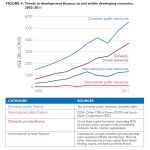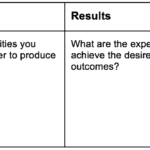The United Nations’ Summit of the Future in September provided the world — and multilateral organizations like the UN itself — with an opportunity to rethink our collective approach to international collaboration. And in the Summit’s aftermath, the need for a new approach is clearer than ever.
The Summit happened at a time of growing doubts about the likelihood that the world will meet the 2030 deadline for the Sustainable Development Goals (SDGs). With only 17% of the SDG targets currently on track — and almost half showing minimal or moderate progress, while over one-third are stalled or regressing — those doubts are understandable. The adoption of the Pact for the Future — signed by member states following the conclusion of the Summit — offers the international community a roadmap for getting the SDGs back on track. But its broad ambitions can only be implemented if there is consensus on how the world can work together to achieve our shared goals.
The Summit was intended to be a defining moment for all international actors, refocusing attention on how global stakeholders can collaborate to revive progress toward the SDGs. But for that to happen, all actors need to determine how to work together more effectively across sectors to unlock the expertise of those who have a stake in achieving our development objectives, including private companies and philanthropic funders, governments and non-governmental bodies. Despite private businesses and philanthropic organizations offering a golden opportunity for unlocking meaningful progress toward these objectives, they are rarely viewed — or treated — as close partners of international institutions and national governments.
In response to the challenges facing our current approach, it’s important for us to identify and move beyond past practices that haven’t worked. If we take SDG 4 for quality education as one example, education targets will not be met by the end of this decade without a change to how we collaborate and innovate. To that end, multilateralism must continue to evolve and adapt, building on its many strengths while also bringing a new way of thinking into our global efforts — thinking that fosters greater cohesion between the public, private and non-profit sectors.
Viewing the philanthropic and private sectors as equal partners in the multilateral system
Not all institutions, organizations and governments operate on an equal footing in the current multilateral system. Private and philanthropic actors should be integral components of the global effort to achieve our shared development goals, valued for their experience and capabilities. However, they are not viewed as equals to the international and national governing bodies that set the agenda at multilateral organizations, despite their ability to pursue innovative solutions.
We’ve seen one example of this dynamic in our own organizations’ collaborations with the UN. At the end of this year, the Jacobs Foundation’s term as a member of the SDG 4 High-Level Steering Committee — the global coordinating body for education cooperation — will end. The Foundation will pass its seat, which was created to represent both the private and philanthropic sectors, to Microsoft. We appreciate that both sectors have an opportunity to engage in this forum, and creating a shared seat for “Foundations and Private Sector Representatives” allows for collaboration and synergy between the UN and its philanthropic and business partners. But the fact that the seat groups these organizations together, with only one representative per term, gives the impression that both sectors are not perceived as equals to their public sector counterparts in the multilateral system, each with unique contributions to make.
The private and philanthropic sectors bring more than investment to the table; we offer valuable ideas and experience. The alternative approaches and ideas we can contribute are exactly what the multilateral system needs, as it works to identify and implement solutions to the most pressing challenges the world is facing. And though it’s significant that the two sectors are increasingly involved in government and international institutions’ efforts to mobilize innovative financing for the SDGs, if that capital isn’t showing progress, it’s time to rethink the programs and initiatives that receive that funding. The private and philanthropic sectors can help advise international institutions and governments on alternative ways for investment to be deployed to create the necessary impact. To reach our shared goals, we need to actively embrace this creativity in our solutions.
The impact of cross-sector collaboration
As a philanthropy dedicated to using evidence in education and a company spearheading technology-based solutions to many of the world’s learning challenges, our organizations’ combined global experience is something which governments and multilateral institutions should leverage to generate impact.
Microsoft and UNICEF’s Learning Passport initiative is an example of a cross-border innovation that breaks down barriers to learning: It has supported over 2 million children in their learning journeys. The mobile platform acts as a tool for governments to localize their education curricula for underserved learners, and it is a testament to the global scale at which such partnerships can have a tangible impact.
Additionally, the World Bank has recognized the Jacobs Foundation’s Child Learning and Education Facility (CLEF) in Côte d’Ivoire as a best-practice example of private-public collaboration. Driven by the Ivorian government, CLEF brings together the government, the philanthropic sector and the cocoa industry to work collaboratively to improve the quality of education and prevent child labor in cocoa-growing regions across the country.
However, despite these promising examples, this expertise and experience are not valued as much as they could be across the multilateral system. Too often funders are seen only in terms of their financial input, and not their ability to co-create solutions. The multilateral system could benefit by fully leveraging our expertise, as well as our resources.
This is not to say that this sort of cross-sector collaborative work isn’t being done: For instance, the Global Business Coalition for Education coordinates private sector engagement and partnerships across many multilateral organizations, while the Global Partnership for Education acknowledges the value that partners across sectors can provide.
Nevertheless, more progress is needed. We want to see private and philanthropic actors have a greater say in how the SDGs are pursued and achieved. This would mean greater representation on multilateral bodies for both sectors, and improved collaboration between these sectors and international institutions and governments.
Providing more space for cross-sector collaboration can bring about the change we need. That is the shared vision that we wish to see following the Summit of the Future — a final push for the SDGs, driven by partners across sectors working together as equals.
Simon Sommer is Co-CEO at the Jacobs Foundation, and Dina Ghobashy is Director of Global Education Transformation at Microsoft.
Photo courtesy of Xabi Oregi.



